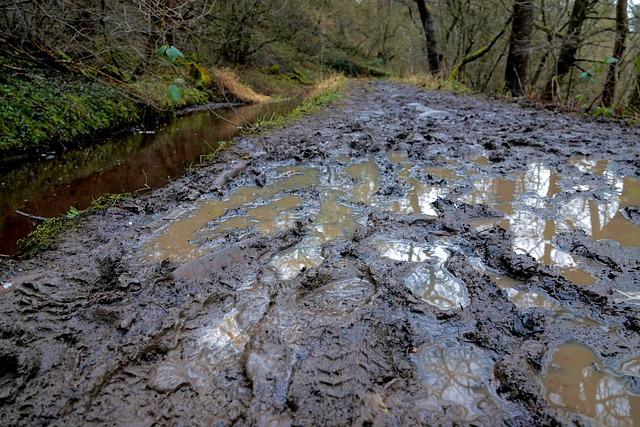| Complexity level: | 4 |
| Project cost ($): | 20 |
| Time required: | 1 hour for preparation, 1 hour for the science fair project experiment |
| Material availability: | Very easily found |
| Safety concerns: | None |
Hypothesis
Sand will require the most water before soil liquefaction occurs.
Overview
Soil liquefaction
Soil liquefaction is the condition where soil will changes from solid to liquid because too much water is retained in the soil. This condition normally occurs in varieties of soils that are granular and in soils with poor drainage.
Liquefaction of soil happens when it is overly saturated with water. This means the space between granules become filled with water, and this water applies pressure on the soil granules and loosens them. During an earthquake or a blasting at a nearby construction site, the pressure from the water increases and the granules will move.
Additionally, during soil liquefaction, the soil is weakened and becomes unable to sustain the weight of buildings on top of it. This will cause cracks to appear on the building, its walls to sink and the eventual collapse of the structure. Liquefied soil also exerts more pressure on their retaining walls, causing surface deformation, cracks and the eventual collapse of walls. Similarly, hill-side landslides are also due to soil liquefaction.
Scientific Terms
Materials
The materials required for this science fair project:
- 1 pail of sand
- 1 pail of clay
- 1 pail of loam
- Tap water
- 1 measuring jug (able to measure 100ml)
- 3 bricks
- 1 black marker
- 1 ruler
- 1 stopwatch
Procedure
1. For this science fair project, the independent variable is the type of soil used – sand, clay and loam. The dependent variable is the amount of water required for the brick to sink. This is determined by counting the number of times 100ml of water is poured into the pail containing the brick and soil. The constants (control variables) are the amount of soil in the pail, the weight of the brick and the sinking height of the brick.
2. Fill each pail to 90% of its height with a different type of sand. Stack the 3 bricks on top of the sand in one of the pails.
3. Draw a line 30mm from the bottom of the bricks using the marker and the ruler. This line will mark the sinking of the brick in the soil during liquefaction.
4. Pour 100ml of tap water into the sand using the measuring jug. Allow the sand to absorb the water for 2 minutes. Then, add another 100ml of water to the soil. Repeat this procedure until the bricks sink 30mm or collapse in the sand. Record the number of times water was added to the soil. Calculate the amount of water used and record it in the table given below.
5. Repeat steps 2 to 4 for the remaining pails.
Results
The results show that sand requires the most amount of water to sink the brick, while loam soil requires the least amount of water.
| Soil type | Sand | Clay | Loam |
| Amount of water required (ml) | 2500 | 1700 | 1100 |
Conclusion
The hypothesis that sand will require the most water before soil liquefaction occurs has been proven to be true.
Soil liquefaction can cause serious damage to buildings and property. When the soil that supports the weight of the building and its foundation liquefies, the building will collapse. This will cause loss of lives and damage to property. Soil liquefaction is also responsible for slope failures, resulting in landslides. It is therefore important to understand the conditions under which different types of soil liquefy.
Also consider
The science fair project may be repeated by filling a pail with several types of soil, compressing the soil and inverting the pail on the ground to create a mound of soil. Then, water may be added until the slopes of the mound collapse.
The experiment may also be done by adding rocks or mixing different types of soil together to compare the results.
References
Soil liquefaction - http://en.wikipedia.org/wiki/Soil_liquefaction
What is soil liquefaction - http://www.ce.washington.edu/~liquefaction/html/what/what1.html

